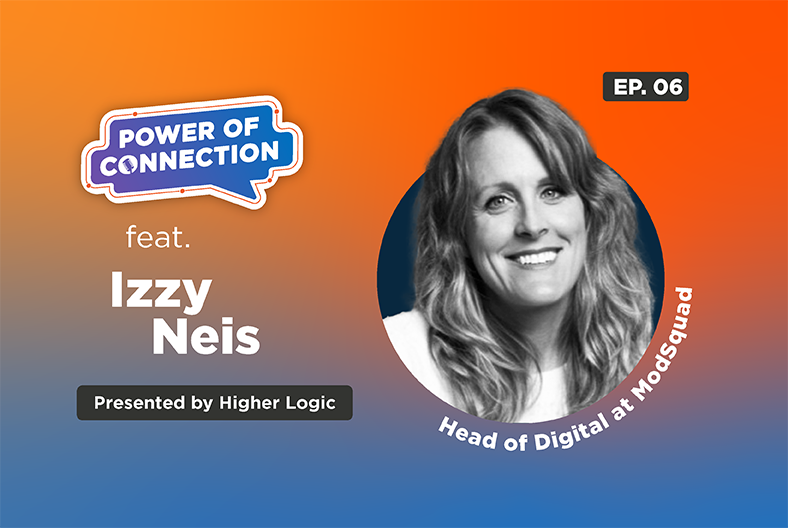
What It Takes to Be a Great Community Manager with Izzy Neis
A company decides it’s finally time to build an online community. They buy the software, set up a forum, run a few launch campaigns. Then comes the big question:
“Who’s going to manage this thing?”
Someone in marketing raises their hand. Maybe a support team member gets voluntold. Or, worst case, Bob—who already has three other jobs—gets assigned “community stuff” on top of everything else.
Six months later? Crickets.
This happens all the time. Companies think that just because a community exists, people will naturally engage. That if they set up a platform, members will magically start conversations and keep them going.
But the truth is, a community is only as strong as the person leading it.
A great community manager isn’t just someone who likes social media. They aren’t just an extrovert who enjoys chatting with people. They’re the architect behind everything that makes a community work: strategy, engagement, structure, and sustainability.
Izzy Neis, an industry veteran and Head of Digital at ModSquad, has seen what happens when companies underestimate the role of a community manager. In a recent episode of “Power of Connection,” she broke down the different types of community managers. If you’re hiring a community manager (or stepping into the role yourself), here’s what matters.
What It Takes to Be a Great Community Manager
A great community manager is part strategist, part host, part data analyst, and part customer advocate. It’s a job that requires more than just enthusiasm for online engagement—it demands structure, emotional intelligence, and a clear understanding of what makes a community thrive.
1. They focus on the long game, not just flashy launches.
Some community managers come from a marketing background and excel at creating buzz. They love big campaigns. Events. Contests. Giveaways. The kind of stuff that gets attention fast. But community isn’t just about the launch. It’s about what happens after.
A strong community needs rhythm. It needs structure. It needs reasons for people to come back week after week.
The best community managers understand this. They balance the exciting, high-energy moments with predictable engagement loops that build habit and trust.
What this looks like in practice:
- Recurring engagement: Things like weekly Q&A threads, monthly AMAs, and expert spotlights create reliability.
- Mid-level engagement spikes: Think limited-time challenges, product feedback sessions, or community-led discussions.
- Big moments: These are the summits, hackathons, or industry events that bring in waves of excitement.
If your only community strategy is “big event → silence → big event,” members will check out.
Want a simple way to stay consistent? Grab our content calendar template to map your community’s cadence.
2. They create spaces for others to talk.
There’s a difference between managing a community and dominating it. Some community managers love being the face of the community—posting updates, making videos, and becoming the main voice. But great community managers shift the focus away from themselves and toward the members.
How they do it:
- Peer-to-peer engagement: Instead of answering every question themselves, they encourage members to help each other.
- Super user programs: They identify and nurture top contributors, turning them into community champions.
- Conversation seeding: They start discussions in a way that invites responses, not just statements.
If your community is centered around a single personality (even if that’s the company’s CEO), it’s vulnerable. True community sustainability comes from decentralizing influence and empowering members.
3. They measure the right metrics.
If you’re looking at total member count as your #1 success metric, you’re doing it wrong.
A community’s health isn’t measured by how many people sign up. It’s measured by how engaged they are. Great community managers focus on the right data points. Some of Izzy’s favorites include:
- Daily and Monthly Active Users (DAU/MAU): Who’s actually logging in?
- Engagement rate: Are people commenting, reacting, or starting discussions?
- Retention and return rate: How often do members come back?
- Super user activity: Who are the top contributors driving engagement?
And here’s a big one: lurkers matter. The 90-9-1 rule says that in any given community:
- 90% will mostly observe.
- 9% will occasionally engage.
- 1% will be highly active.
Your strategy should cater to all three groups, not just the vocal few.
Want to track what really matters in your online community? Get our guide to measuring performance, making sense of the data, and proving your community’s impact.
4. They have the right personality for the job.
Community management is a mindset. Some people thrive in this role. Others burn out fast. If you’re hiring internally, don’t just look for who has time. Look for who actually fits.
The best community managers are:
- Naturally curious and invested in building connections.
- Energized by helping others engage, rather than seeking personal attention.
- Good at organizing information, structuring conversations, and keeping track of trends.
- Emotionally intelligent and able to navigate conflicts with a level head.
Use personality tests like 16 Personalities (based on Myers-Briggs) to find candidates who are natural facilitators, connectors, and relationship-builders.
Want more insights? Listen to the full podcast episode
If you want to go deeper, Izzy Neis and Paul Schneider dive into:
- The biggest mistakes companies make when hiring a community manager.
- Why community needs to be designed for long-term success.
- How to measure engagement the right way.
- What makes the best community managers stand out.

